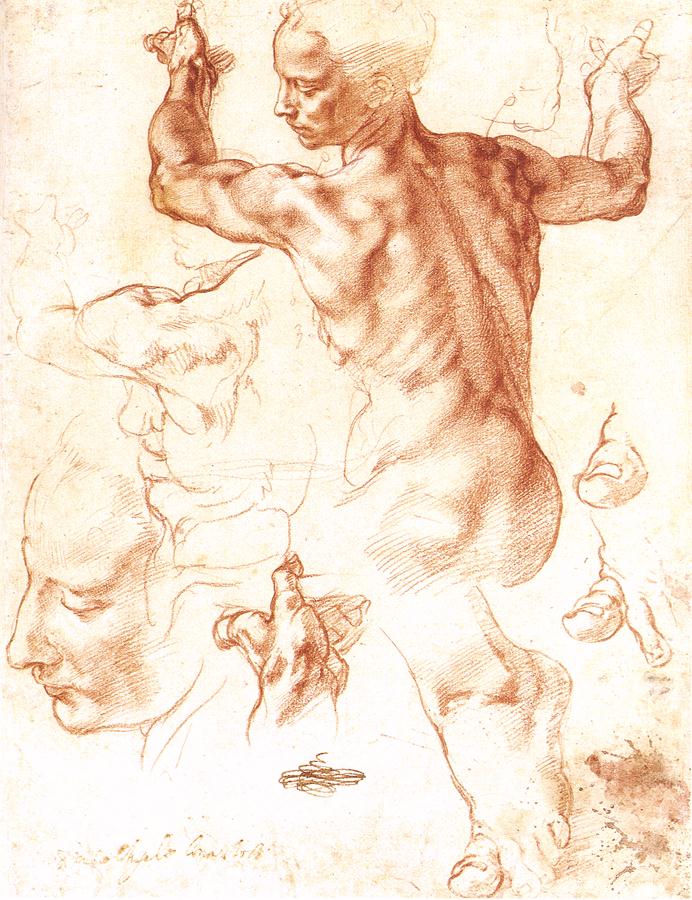~ Must drawing be graphic in nature? Elaborate with at least 2 examples.
~ Does the act of drawing necessarily result in a drawing? Are the two mutually inclusive? Explain.
~ Does drawing serve as the basis for other forms of art or stand on its own? Does it matter that we make a distinction?
~ Find three examples you feel best exemplify DRAWING with captions (artist, medium, date, size) and an explanation on WHY you chose these.
Drawing is the use of a tool (generally held in the hand)that leaves a visible residue on a surface that is often, but not necessarily flat. While it could include a 3rd dimension, I cannot think of any situations in which the drawing doesn't have a definite border (Challenge to classmates!).
"graph·ics
[graf-iks]noun
1. ( used with a singular verb ) the art of drawing, especially as used in mathematics, engineering, etc."
Please classmates challenge my literal argument for why drawing must be graphic. Clearly it doesn't have to be or she wouldn't want examples.
"draw·ing noun \ˈdrȯ(-)iŋ\
1: a picture, image, etc., that is made by making lines on a surface with a pencil, pen, marker, chalk, etc., but usually not with paint
2: the act or art of making a picture, image, etc., with a pencil, pen, marker, chalk, etc., but usually not with paint"
The difference between drawing and painting in my mind is that paint includes an interchangeable paste substance to be used on the tool. I conclude that if a drawing is not at least temporarily produced, one cannot claim they were performing the action of drawing.
Drawing definitely stands on it's own, but is used as a foundation for other methods because line-making with a tool held in the hand is particularly convenient in planning out more artistically complex pieces. Here it does matter if we make a distinction, because whether another form is needed determines whether drawings count as complete pieces. I believe since a significant portion of drawings have been declared complete by the artist without the need for texture or color, this is why drawing stands on its own. However, in general, defining the boundaries between what counts as a drawing and painting are as arbitrary as the difference between red and orange. The world is a spectrum and man always seeks to fill the gaps that make artists uncomfortable.
2: the act or art of making a picture, image, etc., with a pencil, pen, marker, chalk, etc., but usually not with paint"
The difference between drawing and painting in my mind is that paint includes an interchangeable paste substance to be used on the tool. I conclude that if a drawing is not at least temporarily produced, one cannot claim they were performing the action of drawing.
Drawing definitely stands on it's own, but is used as a foundation for other methods because line-making with a tool held in the hand is particularly convenient in planning out more artistically complex pieces. Here it does matter if we make a distinction, because whether another form is needed determines whether drawings count as complete pieces. I believe since a significant portion of drawings have been declared complete by the artist without the need for texture or color, this is why drawing stands on its own. However, in general, defining the boundaries between what counts as a drawing and painting are as arbitrary as the difference between red and orange. The world is a spectrum and man always seeks to fill the gaps that make artists uncomfortable.
Hand with Reflecting Sphere by M. C. Escher
Lithograph! 12.5 in × 8.4 in, 1935
Though not a traditional medium, displays all the other characteristics of a drawing. Stretches the limits in only one way. I encourage more exploration of Escher.
Le Pingouin by Pablo Picasso
ink 1907
Drawings can be simple. This very famous drawing uses only one line.
Studies for The Libyan Sibyl by Michelangelo
1508-1512, 11 3/8 x 8 7/16 in. red chalk (recto)
Drawings can be accurate, and also in preparation for another work. The Libian Sibyl was a painting.



These questions are meant to deconstruct our given definitions of what drawing is and see how rigid they actually are in broader applications. Is anything with wet media a painting? If not how do you find that line? What about pottery, photo, printmaking with drawn images on the surface? Are any of these *pure* fields of study? Can/ should we draw lines? Do we not have implied framing even without a frame? Think about where the edges and implications of this fall away. That's what I am asking for
ReplyDeleteLovely post :)
DeleteI could beat around the bush, but ultimately you asked questions about definition. If you set the definitions aside is there any point to the word in the first place? I've updated the paragraph above Escher.
ReplyDeleteHaha. No. This is perfect. There are many ways to answer this question. It has to do with interpretation and meaning. You took a very literal approach to answering it and that is absolutely answering what I asked. What we will do is look at how everyone sees the same word and its iterations and go from there. This will both clarify things and give us a launching point into a discussion into "intent". :)
Delete